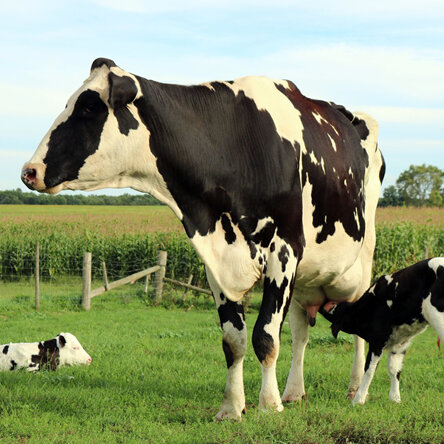Calving is a critical time for cow welfare with countless factors contributing. BCS, nutrition, shelter, trace element, and mineral status are important, and there are also multiple post-calving considerations as well, e.g., the use of anti-inflammatories. Furthermore, having good cow welfare at calving often relies on things that happen in the weeks to months prior to calving.
The very basics of ‘welfare at calving’ is knowing your legal requirements. The following are the minimum standards that must be achieved to meet your obligations under the Animal Welfare Act 1999.
The Legal Minimum Standards in New Zealand for a calving cow are:
- Dairy cows close to calving must be inspected at least twice every 24 hours.
- If during the inspection of a cow or heifer calving is not proceeding normally, e.g., she is experiencing vigorous and regular abdominal straining without progress, remedial action must be taken.
- A moving vehicle or any other instrument that does not allow for the immediate release of tension (including a motorised or mechanical winch) must not be used to provide traction to assist calving. AKA It is illegal to use a motorised vehicle when calving a cow.
Recommended Best Practices (The Code of Welfare: Dairy Cattle, 2019)
- “Cows close to calving should be inspected frequently; preferably at least every 6 hours”.
Stock people are the eyes and ears of the farm owner. Cows should be looked at during milkings, in yards, paddocks, or races, when moving stock, or driving past.
- “Those inexperienced in stock management should obtain immediate expert advice if they find a cow having difficulty calving. As a guide, heifers should not be left trying to calve for longer than 2 hours, and adult cows longer than 1 hour, before assistance is given or veterinary help sought.”
Signs of discomfort may include being separated from the herd, kicking the abdomen, bellowing, and actively pushing without progress after 1-2 hours (back arched, straining, abdominal contractions.)
- “To minimise the potential for damage to either cow or calf, controlled traction should only be used if the operator has diagnosed an unrestricted birth canal and the calf is in the normal position for delivery. Where no progress is made after 5 minutes of controlled traction, veterinary advice should be sought.”
- “Calving paddocks should provide dry ground, shelter and protection from adverse weather.”
- “Easy-calving sires should be selected for heifer mating as large calves can cause significant damage to small dams, particularly during their first calving.”
If you want to know more about cow welfare around calving, contact your local Franklin Vets Clinic.
Dr Jordan Lay, BVSc (Dist) - Farm Vet at Taupiri




